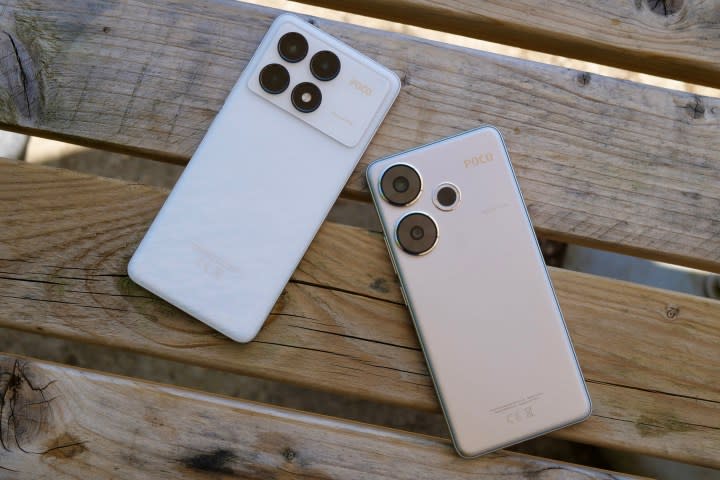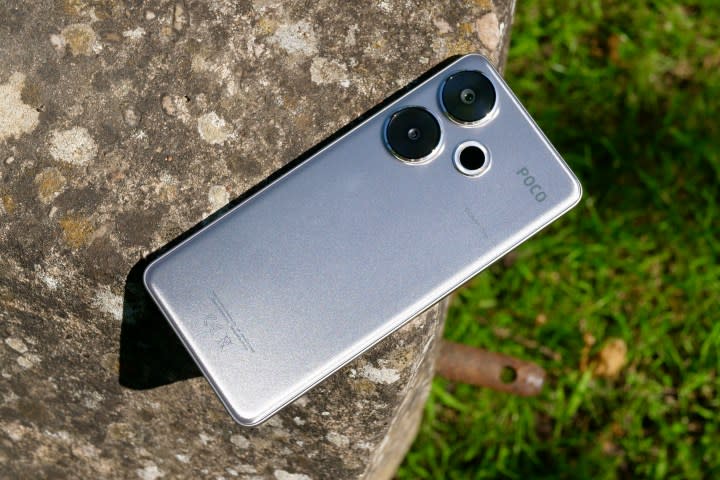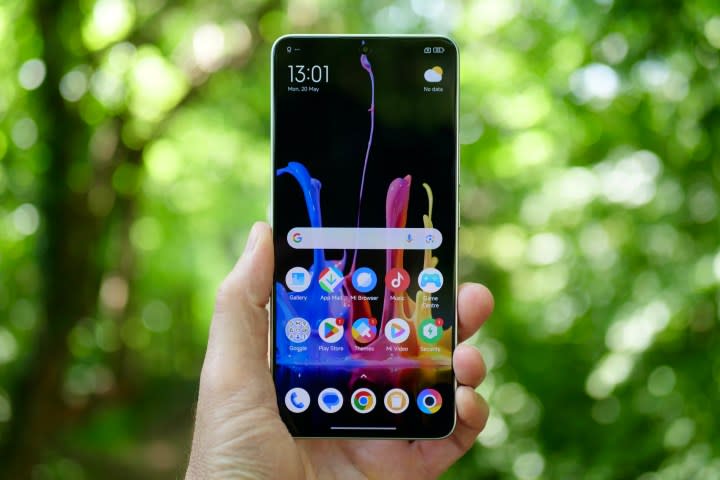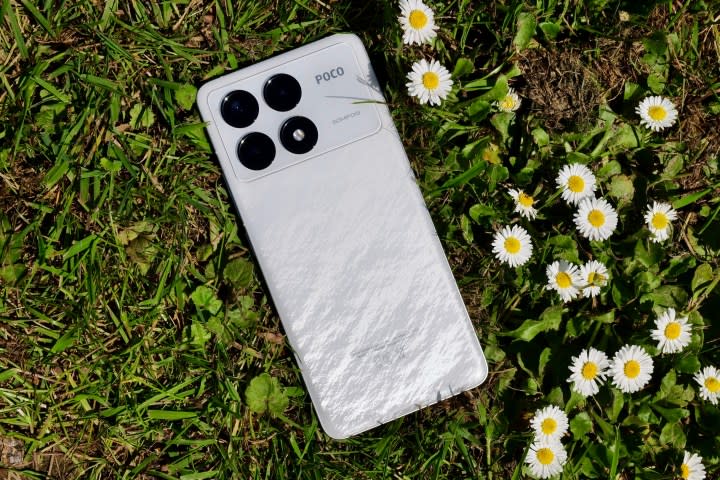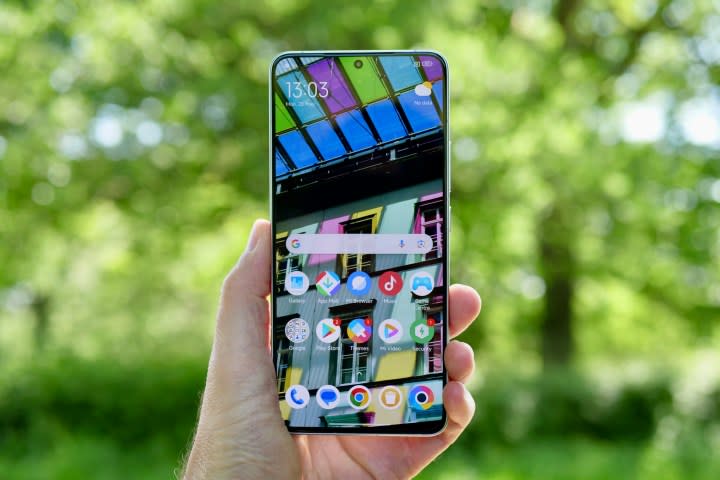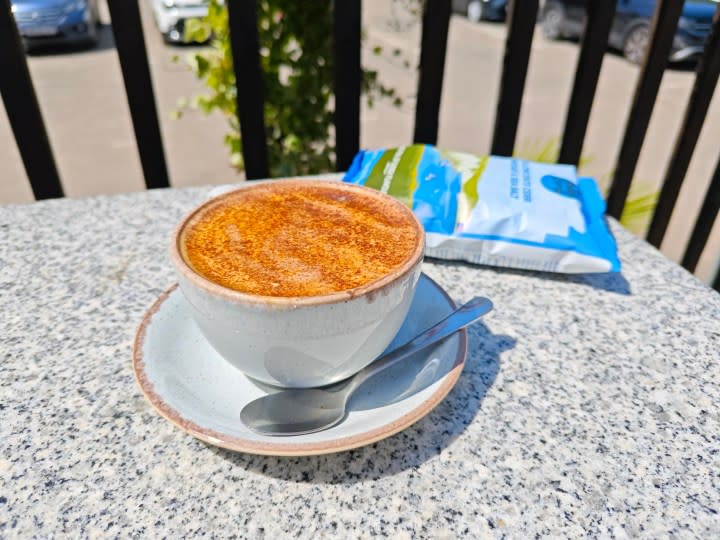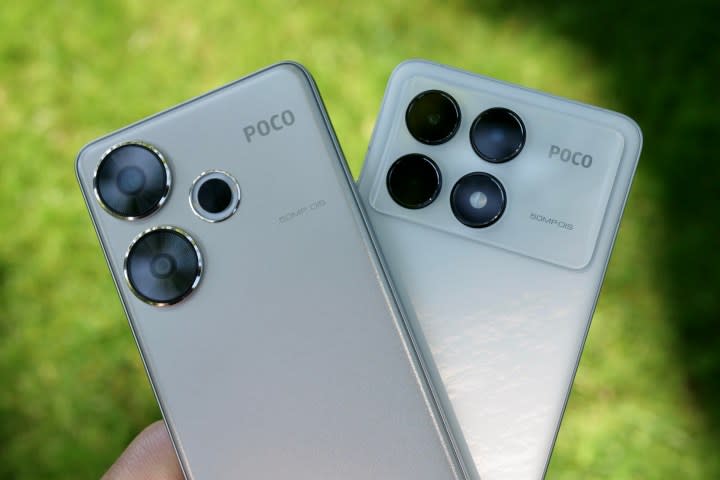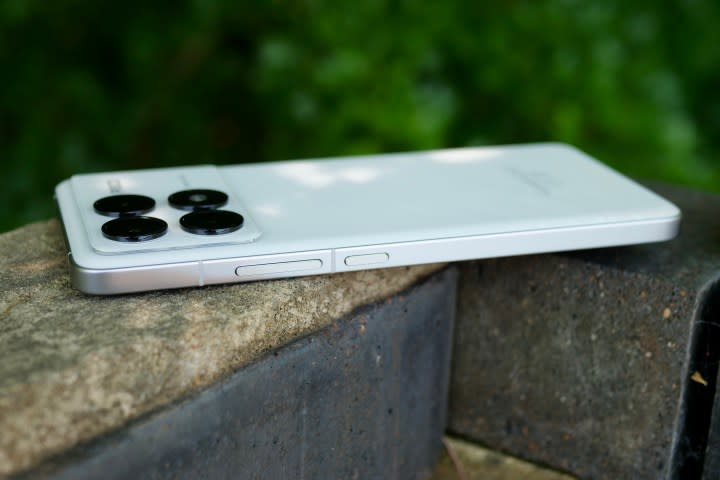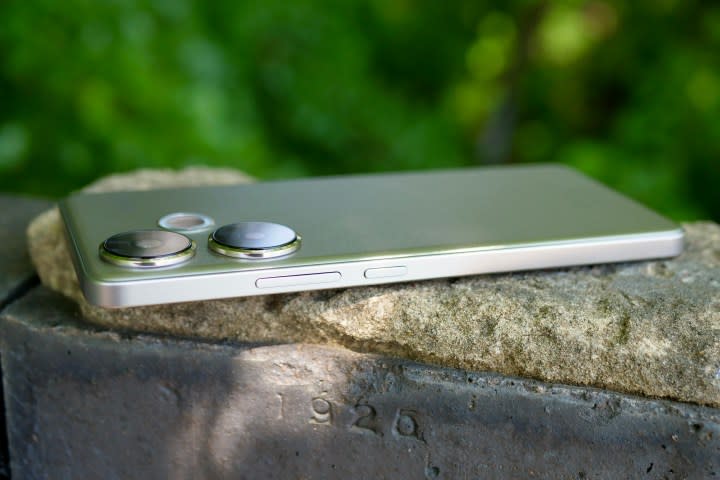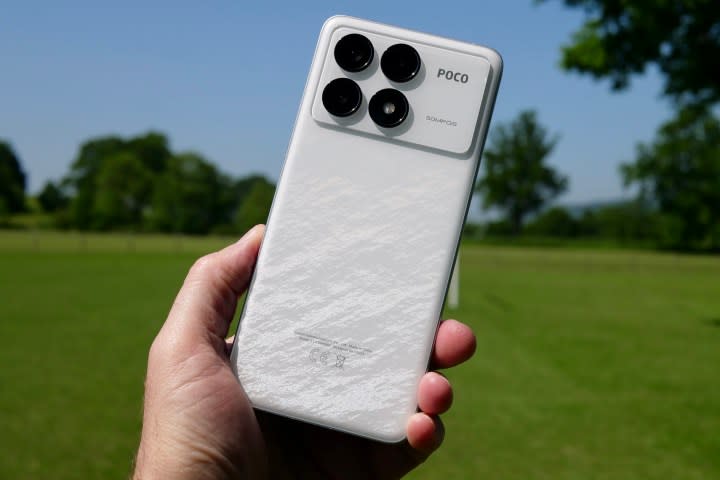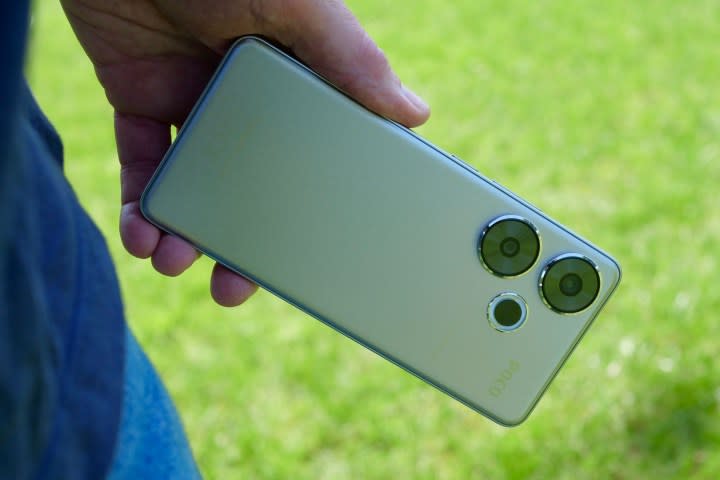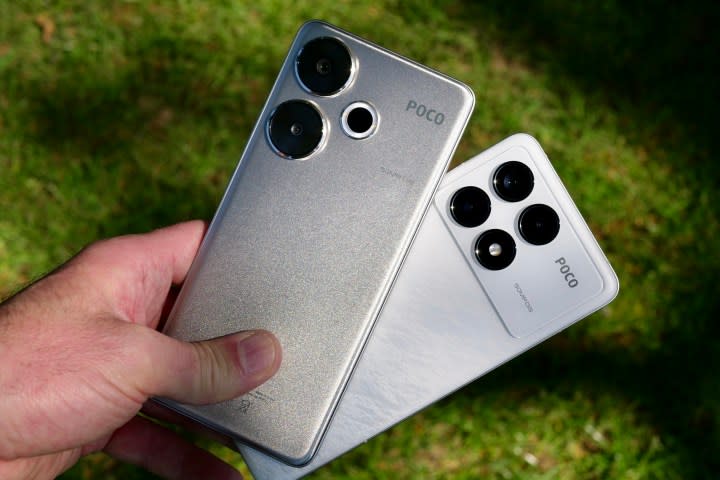These are two of the most confusing Android phones I’ve used in 2024
Poco isn’t a smartphone brand many may have heard of, but those who have will mostly associate it with bright, colorful gaming phones. That’s not the case for the Poco F6 and Poco F6 Pro, Poco’s two latest devices that are surprisingly mature in appearance, yet still furnished with some of the customary design flair expected from the brand.
However, despite sharing a name, the two F6 phones are really different. It’s quite hard to work out which one is the real star just from looking at the specification sheets, as there are interesting things about both. When they arrived, I had my SIM card in the Google Pixel 8a, so which new Poco phone should replace it? I used them both to find out.
Poco F6
I was very intrigued to try the Poco F6 due to it using the Qualcomm Snapdragon 8s Gen 3 processor, which is one I’ve not experienced yet. The slightly misleading name indicates it’s a high-end chip, but it’s really a mishmash of various old Snapdragon 8-series chips assembled like a “greatest hits” version for reasonably priced Android phones. This actually sounds pretty good. So, is it?
I’m using the 12GB RAM Poco F6 model, and it’s a great performer. Playing Asphalt 9: Legends on the highest in-game settings, at full brightness and in Poco’s Ultimate gaming mode setting, didn’t cause any issues, and the game was smooth, fast, and exciting. It’s capable of running the 3DMark benchmarking app’s ray tracing-infused Solar Bay Stress Test, and it looked flawless on screen. It certainly made the phone warm to the touch, but not hot, and it sailed through the test. My first experience with the Snapdragon 8s Gen 3 is a very positive one, and the Poco F6 seems to be a great mobile gaming partner.
The lightweight plastic body (just 179 grams) and big 6.67-inch AMOLED screen help boost its gaming credentials, and the dual speakers sound great, too. Encased in the sparkly rear panel are two cameras — a 50-megapixel Sony IMX882 main camera with optical image stabilization and an 8MP wide-angle camera. The Poco F6 isn’t a camera superstar. Coming from the Pixel 8a, which has an excellent camera, I found the F6’s photos inconsistent, as they often showed dull or inaccurate colors, while the noisy, pixelated wide-angle camera was an inevitable disappointment.
One hidden feature that is unique to the F6 is Contactless Gestures, which is found under the Active Visual Perception menu on the phone. It lets you wave your hand in front of the selfie camera to control music, answer and end calls, and scroll through documents. It only works with a few Poco standard apps and Netflix and is considerably slower and less convenient than touching the screen, but it was a nostalgic throwback to phones like the LG G8 ThinQ, right down to it not working very well. It’s odd it’s not included on the Poco F6 Pro.
Elsewhere, it has a 5,000mAh battery with 90-watt charging (the charger is included in the box), 5G and NFC connectivity, an IP64 water- and dust-resistance rating, a 120Hz refresh rate, and Xiaomi’s HyperOS software based on Android. I found Poco’s interface over HyperOS busy and distracting, and was immediately put off by the many bright colors (it’s like it was designed with crayons) and multiple preinstalled apps.
The Poco F6 is a good start, but my SIM stayed firmly in the Pixel 8a. Would the Poco F6 Pro change that?
Poco F6 Pro
The Poco F6’s Snapdragon 8s Gen 3 turned out to be a highlight of the phone, but what about the Poco F6 Pro? My interest was piqued by the 50MP main camera, listed as a Light Fusion 800 sensor, which I’ve not seen before. Would it improve over the disappointing Poco F6’s camera? It does, but not in the way I’d want, and it definitely hasn’t encouraged me to swap from the Pixel 8a either.
The Light Fusion 800 main camera is joined by another poor 8MP wide-angle camera and a useless 2MP macro camera, so just because the F6 Pro has an additional camera on the spec sheet, don’t assume it’s better. The main camera amps up the saturation compared to the F6, but also increases the noise. It’s a rather unrefined camera in general, with detail crushed under the weight of overexposure in bright conditions or lost in murky contrast levels. I’ve only taken a handful of photos with each new Poco phone, but neither has impressed or pushed me to go out and take more.
The F6 Pro has a solid, reliable Snapdragon 8 Gen 2 processor inside and not the Snapdragon 8s Gen 3. It’s a familiar, efficient, and impressive performer, so I had no concerns using the phone. There’s also faster 120W wired charging for the 5,000mAh battery. The 6.67-inch, 120Hz AMOLED screen has a 3200 x 1440 pixel resolution and is brighter than the F6’s screen — and it’s all wrapped up in a very cool metal and glass body, with an eye-catching, cracked ice-like effect on the back.
It’s certainly a step up from the F6, but the phone is heavier at 209 grams, and for some reason, it does not have an IP rating to improve durability. The same HyperOS software and Poco interface are installed. While I prefer the design of the Poco F6 Pro and trust the Snapdragon 8 Gen 2 chip, outside of the brighter, higher-resolution screen, the Poco F6 will probably satisfy most people looking for a midrange phone that’s not all about the camera.
Using the Poco F6 Pro underlined why I wasn’t sure which of the two I should dedicate the most time to using, as its name and on-paper camera spec should make it the more desirable and more exciting of the two. However, the Poco F6 has some additional features that add value, and because neither camera is very good, I couldn’t find many reasons to stick with the F6 Pro.
More confusion, as usual
It was confusing to look at the different spec sheets and try to decide which new Poco phone to spend the most time with, as both have interesting aspects. I split my time evenly and discovered the Poco F6 is the better phone of the two, with little aside from the screen to sell me on using the F6 Pro. But even working this out hasn’t meant the confusion has ended. Irritatingly, these two phones aren’t unique in Xiaomi’s extensive catalog.
Poco is part of the Xiaomi family, although exactly how closely the companies work together isn’t clear. The fact is the Poco F6 and Poco F6 Pro are very closely related to two other Xiaomi phones — the Redmi Turbo 3 and the Redmi K70. Both of these also use Xiaomi’s HyperOS software, but with the MIUI interface and not Poco’s eye-gougingly colorful one. So when we started out, there was a choice of two phones, but now, you’ve got a choice of four phones.
This level of confusion isn’t new to Poco due to its complicated relationship with Xiaomi, and which you choose will likely come down to where you live, what’s available, and which brand “speaks” to you (and your wallet). On that subject, at the time of writing, Poco has not confirmed the price and availability of either the F6 or F6 Pro, but we will update this article when we know more.
After all this time spent trying cameras, processors, and software, which phone do I think you should go out and try? That’s easy, it’s the Google Pixel 8a.
